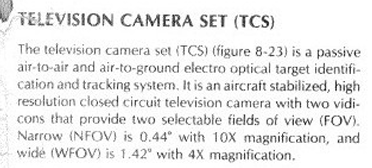I asked a senior tech mod and I was told it’s good to use
Surprised they haven’t been retired yet. I guess they are waiting for EX production to pick up
Don’t get me wrong I love F-15C but when I see an F-15 serial that starts with anything below 86 all I can think of is the grandma worm from Spongebob
Nice to see the F-15C “Sandman” with the 114th Fighter Squadron from Kinsley Field
(unlockable in-game skin) make an appearance in this cool video:
They need to let them retire, that thing was ordered in 1978 (or production was started on it that year) if I understand USAF serials

Seems that (all) the AGM-65 reports will be implemented next major, hopefully. So all in all, this would be:
- FoV fixes for the IIR Mavericks (up to 3x more zoom or up to 10x more, depending on how they implement it)
- Rocket engine fix (~+15% total impulse) for all Mavericks
- Drag fixes (lowering of drag) for all Mavericks
- Laser Maverick seeker range increase (by roughly at least 3-4km)
- Laser Maverick trackrate (from 8 to 12°/s)
- PBX warhead Maverick (less explosive mass, but slighlty different explosive, TNTe probably won’t change)
Idk if I missed some. Tracking rate of IIR Mavericks can be reported as well, but I will first have to see if I can use the documents I have on it. I also wonder what those changes to the Kh-38/29 will be…
💀
The biggest update of the year and everybody gets the middle finger. Especially the U.S
Comanche pack premium
Usually I end up being more excited about the bug fixes and new additions/changes to old stuff than the new stuff anyway. But if the US (and UK, France, Italy) end up not getting some new toptier SPAA, I will actually be pretty sad. The list isn’t final so there’s definitely still a good chance.
I agree.
New mechanics and bug fixes are very nice but if other nations get those spaa’s why can’t the rest of them get them?
@sudo_su1

Looks like they went with the real FoV (over real magnification), so huge zoom as predicted.
I hope these won’t be the only Maverick changes though.
Everything else is also adjusted based on FoV values so it makes sense for the sake of consistency …
That’s mostly true and fair I suppose, but I think, or at least I remember somewhere, that zoom/magnification values are preferred over FoV. I believe the AN/AXX-1 is the only airborne sight with real magnification modelled over FoV (at 4-10x). Pretty much all ground vehicles have actual zoom modelled.
I wonder if they are going to change the thermal quality on the F-4F KWS and Kurnass 2k now though. Pretty funny if not, because the Kurnass 2k would be running around with essentially a Litening II pod then with its gen 2 thermals on the Mavs.
how do you find channel loss just curious like how do we know its accurate how much channel loss there is ?
To know exact channel loss you need documents.
Most NATO jets have installed thrust amounts at mach 0.9 in unclassified and unrestricted documents, so most of the time knowing exact channel loss isn’t necessary.
what about F-111B with phoenixes (at lower br than f14a)
Sounds like the other mav changes will be in the upcoming update, according to the leak list.
Is there a source for its magnification?
NAVAIR F14AAA-1 1984

Goes to show you that FoV is not a good indicator of magnification (same as zoom in-game). In-game with real FoV, TCS would have 52-168x zoom. But irl it has lower magnification than the AGM-65D despite smaller FoV.
Do you know how it’s calculated?
Because I can’t understand how projecting 1.42 deg on a display results in 4x magnification while projecting 1.5 deg on a display that’s around the same size results in 16x magnification.
Different focal lengths, aka different lenses. In WT, every sight has the same focal length, so FoV directly correlates to magnification. But IRL it’s a mix of FoV and focal length that determines magnification.
shitty drawing:
Spoiler
Note that these are different lenses. If the same lens is used (with same refractive index), pushing the detector forwards to decrease focal length, simply increases FoV and decreases magnification.
Magnification is the ratio between the actual FoV and the apparent FoV (white and red dashed lines). The blue dashed line is the actual FoV if lens A were to be moved to the position of lens B (to get same focal length), since with lens A, the light is bended much less, the apparent FoV is the same as that of B then (red dashed line). But you can see that in this scenario with lens A, the ratio between the actual FoV (blue) and apparent FoV (red) is less favorable, it’s closer to 1, which means less magnification.

